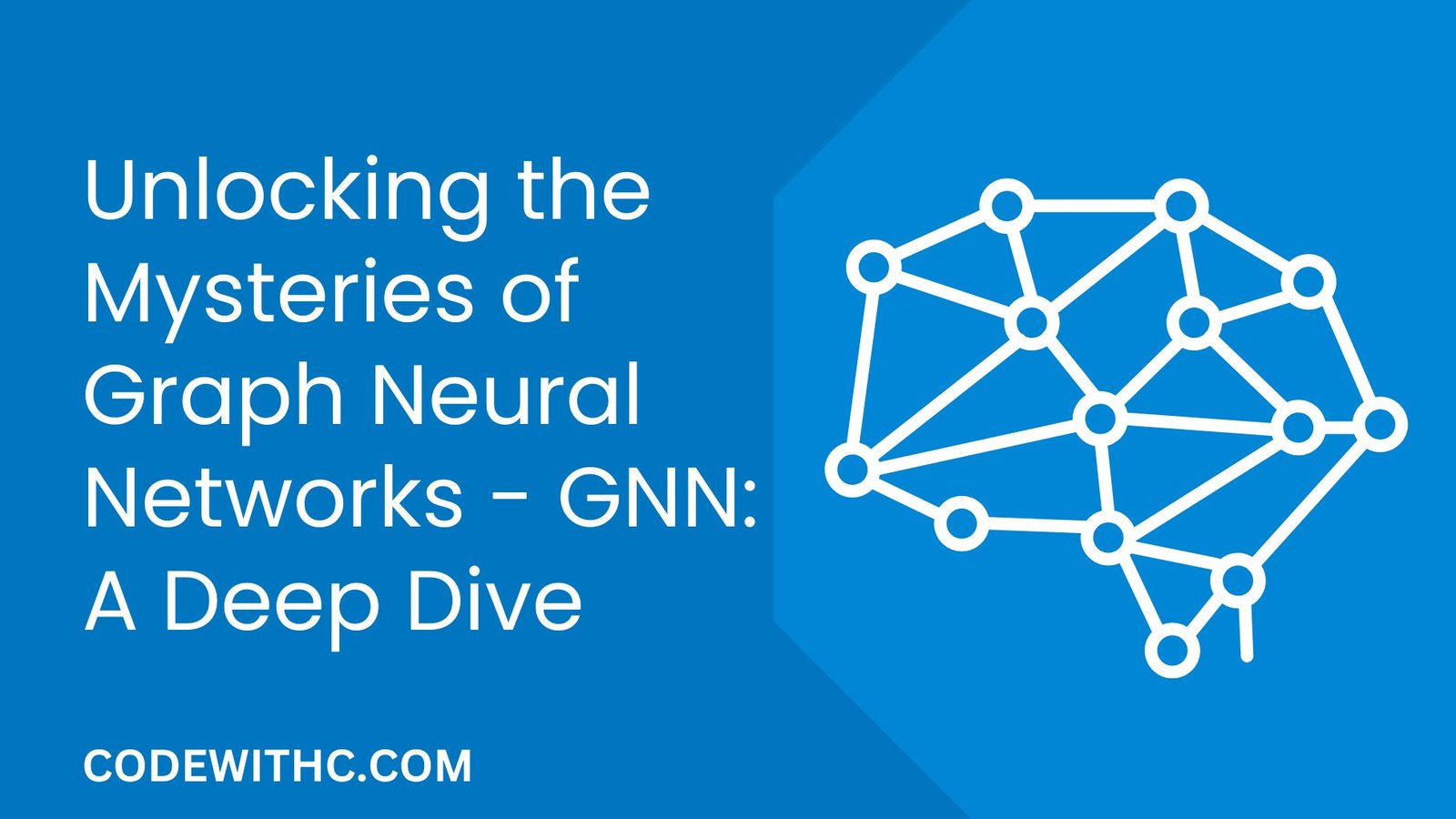Hey folks, remember that time you tried to explain to your grandma how everyone in the family is related? Cousins, second cousins, and don’t even get me started on Aunt Karen who’s actually not even an aunt! Imagine trying to lay out all those connections in a way a computer could understand. Enter Graph Neural Networks – GNN. It’s like the family reunion of data, where everything is interconnected in ways you wouldn’t believe. ? So grab some popcorn, ’cause we’re about to get into the nitty-gritty of Graph Neural Networks (GNNs).
The Ultimate Journey Begins: Navigating the Maze of Graph Neural Networks
Hey, it’s like you’re standing at the edge of this mind-blowing labyrinth, right? ? Imagine you’ve got a map that can decode the entire Internet, from the intricate web of social networks to the complex structures in bioinformatics. You’re about to venture into this maze with a lantern called Graph Neural Networks (GNNs). It’s gonna light up pathways you didn’t even know existed!
I’m sure you’ve heard about neural networks. Heck, they’re everywhere—self-driving cars, facial recognition, you name it. But let me spill the tea, those are just the tip of the iceberg! ? GNNs dive deeper, reaching the uncharted territories of data that’s more interconnected than the plot of a telenovela. ? So, buckle up, ’cause we’re about to go deep—real deep—into the universe of Graph Neural Networks. You in? ?
What are Graph Neural Networks?
Picture this: you’re at a rock concert. The beats are banging, and people are connected through the love of music. ? Imagine if each person at the concert is a data point and the relationships, like who knows who or who’s dancing next to whom, are edges. Graph Neural Networks are the rockstars that understand these complex connections. Unlike traditional neural networks that assume data points are independent, GNNs get that life’s messier. They’re all about capturing the relationships between nodes in a graph.
Why Even Bother with GNNs?
Here’s the thing—life ain’t linear. Ever tried to chart out your friend group? It’s not just a list; it’s a web of interactions. GNNs can capture this complexity, making them super useful in fields like social network analysis, molecular biology, and even recommendation systems. Imagine Netflix but smarter, suggesting shows that not only you’d like but also your friends who have similar tastes. ?
The Core Components of a GNN
Node Features
This is where the magic starts. Node features can be anything from a person’s age to the type of music they dig. It’s like the DNA of the graph. The richer the features, the more insights you can draw.
Edges
Edges are the connections, the invisible threads that weave the web together. Think of it like the gravity that keeps the planets in orbit. Without edges, the graph’s just a bunch of floating points in space.
Let’s Get Coding: A Simple GNN Example
import torch
import torch.nn as nn
import torch.nn.functional as F
class GraphConv(nn.Module):
def __init__(self, in_channels, out_channels):
super(GraphConv, self).__init__()
self.linear = nn.Linear(in_channels, out_channels)
def forward(self, x, adj_matrix):
x = torch.mm(adj_matrix, x)
x = self.linear(x)
return F.relu(x)
# Initialize node features and adjacency matrix
node_features = torch.rand((5, 4))
adj_matrix = torch.eye(5)
# Graph Convolution layer
graph_conv = GraphConv(4, 2)
output = graph_conv(node_features, adj_matrix)
print("Output Node Features:")
print(output)
Code Explanation
We’re using PyTorch here, folks. The GraphConv class is our GNN layer. It takes node features and an adjacency matrix as inputs. The adjacency matrix indicates how nodes are connected. We then multiply the adjacency matrix with the node features and pass them through a linear layer.
Expected Output
You’ll get a tensor of updated node features. This tensor has a shape of (5, 2), representing 5 nodes each with 2 features.
Practical Applications: From Social Media to Pharmaceuticals
Social Media Algorithms
Ever wondered why you keep getting TikTok videos of cute dogs? ? That’s GNNs working in the background, understanding not just your preferences but also how they relate to your network’s preferences.
Drug Discovery
In pharma, GNNs can predict how molecules will behave and interact, which is like finding a needle in a haystack. But a super important, life-saving needle. ?
Overall, GNNs are like the Swiss Army knife in your data science toolkit. Versatile, complex, but oh-so-useful when you get the hang of them. Thanks for sticking around, peeps! You’re now officially smarter than you were like 10 minutes ago. You’re welcome! ??
Your Brain After This: Supercharged with GNN Knowledge ?⚡
Woah, woah, woah! Look at us, making it to the other end of this GNN labyrinth. If this was a video game, we’d be staring at the end credits right now, high-fiving each other like champs! ??
In closing, Graph Neural Networks aren’t just another buzzword; they’re a game-changer. From understanding how medicines interact at the molecular level to why you keep seeing cat memes on your social feed (you know you love ’em ?), GNNs are redefining what’s possible in tech. And guess what? You’ve just scratched the surface. The real quest starts now—applying what you’ve learned. So go on, take the world by storm, one graph at a time!
Thanks for rolling with me on this whirlwind tour of GNNs. Until next time, keep those neurons firing and those graphs graphing! Peace out, data rockstars! ??







